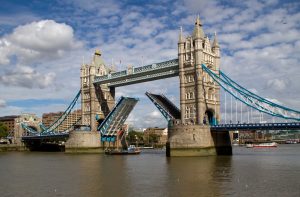Latest News
Have your say on Our Healthier South East London’s proposal on elective orthopaedic centres
Local surgeons would carry out both routine and complex surgery at these two sites – but specialist care would only be undertaken by surgeons with the skills and experience. All hospitals would send their surgeons and patients to these dedicated centres and stop providing most inpatient orthopaedic surgery at their ‘home’ sites.
The elective orthopaedic centre would benefit patients with better quality and reduced risk of infection, where surgery would be less likely to be cancelled and length of stay in hospital would be shorter.
Read more about the potential impact of these proposals
Why two sites?
The work we have done suggests that two would be the optimum number of elective orthopaedic centres for south east London.
Two centres could be the most efficient given the volume of surgery we are expecting in the future. It would also enable services to be located as conveniently as possible for patients in both the inner and outer boroughs – one site would make this much more difficult.
More than two centres would reduce the potential efficiency and quality improvements (because of lower volumes of surgery at each site). Working across a larger number of sites would also make the planning of rotas and timetables for surgeons and other health professionals very difficult.
What wouldn’t change
The location for most orthopaedic care would not change. Emergency orthopaedic surgery (supporting A&E departments), day case procedures, outpatient and follow-up appointments would continue to be provided from the same sites as today.
Therefore, following referral by your GP you would initially be seen at your choice of local hospital and the consultant would oversee your care, even if your operation were to take place at an elective orthopaedic centre.
A very small number of patients with very complex medical needs, requiring specialist on-site support, may receive all of their care, including surgery, at their local hospital or the site most suitable for their needs. Complex spinal surgery would also remain at existing sites, as would children’s surgery.
The consultant surgeon from your local hospital would still carry out your procedure, but it would take place at an elective orthopaedic centre.
Your local hospital would still receive the income for carrying out your surgery, because the two elective orthopaedic centres would be shared by all of the providers.
No decision made
Nothing has been decided and we are interested in hearing your views. Public consultation will be required before any final decision is made. We are exploring ideas with patients, clinicians and other stakeholders.

Dance for Dementia
Each workshop comprises of warm-ups, partner and group exercises, dance and a chance to explore steps from Rambert’s repertoire to stimulate movement memory.
There will be opportunities to interact with other participants, observe Rambert’s dancers in rehearsal and explore the history of the company through our large archive.
Every Monday
3 October – 21 November
Arrival from 10.15am
Movement class 10.45 – 11.45am
Tea/coffee & biscuits until 12.15pm
Please wear loose comfortable clothing and soft soled shoes.
For more information or to enrol contact
Katie Mason
Elders Programme Coordinator
(t) 0208 630 0615

Junior doctors suspend strike plans due to ‘patient safety’ concerns
The British Medical Association’s junior doctors committee (JDC) said it would not go ahead with the industrial action, but was “planning other actions over the coming weeksâ€.
The decision follows a challenge to the leadership of Dr Ellen McCourt, chairwoman of the committee, by doctors from Justice for Health.
McCourt fought off the challengers but there were changes to other members of the junior doctors leadership, who held a summit on Saturday to discuss their new strategy.
“After a vigorous, passionate, thoughtful and wide-ranging debate this afternoon, the JDC has decided to suspend industrial action while planning other actions over the coming weeks,†the committee said in a statement.
The decision was prompted by “feedback from members from every region in England, as well as the views of the wider profession, patients and the public in considering the next steps on the disputeâ€.
“Our primary consideration in coming to this decision has been our overriding concern about patient safety, the care we provide every day and the ability of the health service to deliver this care,†it added.
“To be absolutely clear, the JDC still opposes the implementation of the contract … The past few months have been difficult and frustrating and we know that members are anxious for information and practical support.â€
Junior doctors have been in a long-running dispute with the government over its decision to change their contracts to make it cheaper for the NHS to provide weekend cover.
The health secretary, Jeremy Hunt, decided to impose the new contract on junior doctors, five of whom last week sought to have the decision overturned in the high court. Lord Justice Green’s ruling on that is due on Wednesday.
Union sources say hundreds of trainee medics voicing their concern about the proposed walkouts had led to serious fears that strike turnout would be poor and that the BMA would end up divided, weakened and lowered in public esteem as a result of the stoppages.
Many junior doctors were also concerned that the long duration of the planned strike would put patients’ safety at risk and risk a backlash from the public if anything untoward happened in a hospital while they were protesting outside. Medics have also voiced confusion about the objectives of the stoppages, given that the union’s leadership backed in the early summer the new contract they had negotiated, only to see grassroots juniors reject the improved terms and conditions by 58% to 42%.
McCourt was elected as interim chair after the former leader, Johann Malawana, resigned after 58% of junior doctors rejected a compromise contract.
One senior BMA official said: “Junior doctors don’t want to put patients at risk and don’t want to go ahead with a five-day strike. Quite a few don’t want any more strike action at all. Even the few JDC members who still think that they can’t give up totally wanted the 5-day strike scaled down.
“Junior doctors don’t have the heart or the stomach for this anymore. They don’t see the point of industrial action. They feel let down and blame both Jeremy Hunt and the BMA equally.â€
There is also mounting anger and confusion among junior doctors at what many see as the BMA’s lack of clear strategy in first electing to hold all-out stoppages of unprecedented duration without defining what their purpose was.
The Department of Health welcomed the suspension of the strikes, saying: “The best way to rebuild trust now is for industrial action to be called off permanently in the interests of patients – and we urge the BMA to do so.â€
The strike action was originally planned for this month, but the first five-day walkout was cancelled after opposition from other members of the medical profession.
Opposition to the planned strikes came from the Academy of Medical Royal Colleges, which represents all the doctors’ professional bodies.

Thousands more NHS operations cancelled than figures show, report claims
About half of English NHS trusts admitted in response to Freedom of Information requests that they had cancelled nearly 42,000 operations between one and three days before patients were admitted.
It comes after official figures in May showed the number of hospital operations in England cancelled at the last minute because of a lack of staff or beds rose to 74,086, its highest in 15 years. However, that statistic only records cancellations on the day of admission.
The BBC, which carried out the investigation, says the new figures give a picture more in line with official figures published in Scotland, Wales and Northern Ireland, where the definition of last-minute cancellations is wider and is taken over several days.
FoI requests were submitted to all 156 NHS trusts in England, asking them to provide figures for operations cancelled one to three days before patients were due to be admitted. Data from the 74 trusts which replied suggested they cancelled 41,474 operations within the period.
May’s official figures marked the worst record of cancellations for the NHS in England since 2001-02, when 81,743 patients had procedures cancelled on the day they were supposed to happen. Experts warned that the data was a sign of the pressures on the health service.
At the time, Clare Marx, president of the Royal College of Surgeons, said that pressures on A&E units, staff shortages, and bed shortages due to a lack of social care for discharged patients were contributing to the problem.
An NHS England spokesperson said: “The proportion of patients seeing their operations cancelled at the last minute remains under 1% in spite of record numbers of operations being scheduled.
“Our national data collection rightly requires trusts to focus on monitoring the number of last-minute cancellations, as this is where the most distress is caused for patients.
“Hospitals should continue to ensure that every effort is made to reschedule cancelled operations as soon as possible.â€

Number of smokers in England falls to record low
Smoking rates across England are the lowest on record, health officials have said.
Public Health England (PHE) said that 16.9 per cent of the population in England are smokers – the lowest level since records began.
The figures were released as the health body launched its annual Stoptober campaign to encourage the nation’s remaining smokers to quit for the month of October. If people give up the habit for 28 days they are five times more likely to quit for good, PHE said.
In England there are now twice as many ex-smokers (14.6 million people), than current smokers (7.2 million), PHE added. Last year, out of the 2.5 million smokers who made a quit attempt, 500,000 people (20 per cent) were successful.
PHE also released regional figures on areas that have seen the biggest decreases in smoking rates over the last four years.
Smoking rates in the South West have fallen from 18.7 per cent to 15.5 per cent, in the North East the percentage of smokers has fallen from 22 per cent to 18.7 per cent and in Yorkshire and Humber the number of smokers dipped from 21.9 per cent to 18.6 per cent.
Professor Kevin Fenton, national director of health and wellbeing at PHE, said: “While it is amazing that there are over twice as many ex-smokers as current smokers in England, there are still over seven million people regularly lighting up.
“Alongside unhealthy diet, smoking is the biggest cause of preventable early death in England, accounting for over 78,000 deaths a year. Quitters will soon see they have reduced blood pressure, easier breathing and better circulation. Stopping smoking is the best thing a smoker can do to improve their health.”
The Government’s deputy chief medical officer, Dr Gina Radford, added: “While we know that quitting smoking is not easy, this Stoptober is a perfect time to try again.
“We have a range of free support that can go direct to your phone, laptop or tablet via the Stoptober app, a daily email service or Facebook Messenger bot. The new Stoptober website also has advice and information on stop-smoking services and quitting aids.”
Simon Clark, director of the smokers’ group Forest, said: “Quit smoking campaigns like Stoptober are a waste of public money because smokers don’t need the state to help them quit.
“Smokers who want to stop are increasingly using free market solutions like e-cigarettes that cost the public nothing.”
Penny Woods, chief executive of the British Lung Foundation, said: “We know that smoking is the number one cause of preventable early death, and that if you have a lung condition like COPD it is often the single most important thing you can do to turn your health around.
“On top of this human cost, smoking has been estimated to cost the economy over £10 billion a year. We therefore support public health campaigns like Stoptober that motivate and support people to quit.”

Tower Bridge Closure
The iconic Thames crossing will close to traffic from October 1 while crucial repairs are carried out, with drivers, cyclists and passengers warned of potential “chaos†on both sides of the river.
More details have now emerged of the closure, with motorists being directed to use Southwark Bridge southbound and London Bridge northbound.
Tower Bridge is just outside the congestion charge zone and vehicles following the signed diversion through the edge of the zone will not have to pay the £11.50 daily fee.
Cyclists have been suggested an alternative route which is the reverse of the driver’s diversion, meaning northbound on Southward Bridge and southbound on London Bridge.
Pedestrians will also be unable to cross the Victorian landmark on three consecutive weekends, beginning Saturday 26 November.
A limited free ferry service will be running on those weekends, while alternative routes and walking maps will be available.
Three bus routes will be affected. Route 42 will stop when it reaches the south side of Tower Bridge and route 78 will divert via London Bridge and will stop running at Finsbury Circus bus station.
Route RV1 will be on a full diversion, running from Tower Hill via Eastcheap and London Bridge.
The City of London Corporation is apparently planning the works on the 122-year-old bridge to coincide with the quietest time of the year for riverboat traffic.
Works being undertaken include replacing the decking on the bridge’s bascules plus removing rust, mechanical repairs and road resurfacing.
Chris Hayward, chairman of the City’s planning and transport committee, said: “This decision to close Tower Bridge has not been taken lightly. We will use this time to repair, refurbish, and upgrade London’s most iconic bridge, which has gone without significant engineering works for more than 35 years.â€
The grade 1 listed bridge carries about 40,000 people including 21,000 vehicles a day.
Black cab drivers have calculated that even the shortest river crossing could take up to 30 minutes longer at peak times.
Steve McNamara, general secretary of the Licensed Taxi Drivers Association, had previously said: “Why couldn’t this be done in August, the quietest time of the year? It’s going to be chaotic as Tower Bridge is on the edge of the congestion zone and you can cross without paying.
“This highlights the absolute farce of London not having another river crossing. We’re the greatest city on the planet and we can’t cross the river.â€
The Tower Bridge exhibition will remain open during the works, with views of the works in action on offer from the glass walkway.
For more information visit Transport for London or the City of London Corporation.

Javid rejects Aylesbury CPO bid on human rights grounds
Southwark Council planned to use a Compulsory Purchase Order to move out residents and demolish part of the 2,704 home Aylesbury Estate. The council plans to build 3,500 new homes, 50% of which would be affordable through a mixture of social rent, shared ownership and shared equity.
In his decision letter on the first phase of the demolition the Secretary of State for Communities and Local Government, Sajid Javid, said many of the remaining leaseholders on the estate would be unable to afford the options of either a shared ownership or shared equity property on the estate and the plans would “probably force many of those concerned to move from this areaâ€. This would particularly affect elderly residents and those with children, he concluded.
He added the council had not taken “reasonable steps†to acquire the land through agreement with the residents and the use of CPO would have “considerable economic and social dis-benefits†for leaseholders who still live on the estate.
The Aylesbury Leaseholder Group, who lodged an objection to the council’s plans, said the scheme would fail to deliver enough social rented housing and the estate could be regenerated without being demolished. Under the scheme around 50% of the residents would be moved away from the estate. There are eight leaseholders who are still living on the part of the estate affected by the first phase of the plan.
A compulsory purchase order should only be used where there is a “compelling case in the public interest to justify sufficiently the interference with the human rights of those with an interest in the land affectedâ€, Mr Javid’s decision letter stated. He said the council had not met this test.
Although the Secretary of State concluded the scheme is viable, fits with the council’s Local Plan, and the plans for a mixed tenure development would help the area he agreed with the inspector who first assessed the council’s plan who said a number of the new homes would not meet the council’s daylight and sunlight standards.
Mark Williams, cabinet member for regeneration and new homes, said: “This is an extremely disappointing decision by the Secretary of State, and the council will be reviewing the detail of the report and the decision before commenting further.â€
He added the council remains committed to the regeneration plans.

Social care is running on empty – but technology can make a difference
However, the sustainability of the system is increasingly being called into question. Whether it’s the Adass budget survey, research by the King’s Fund and Nuffield Trust, or my report for the Carers Trust on the Care Act, the message is broadly the same: the system is running on empty, and people are suffering the consequences.
Why has this not exploded into a major political issue? Most MPs acknowledge that social care is unfinished business, but this has not translated into sufficient political pressure. At a basic level, this is because most people make no distinction between social care, care and support and what the NHS does. It still comes as a shock to many families that social care is not free. Most people make no care plans because they have discounted the chances of ever needing it.
Today the most visible advocate for social care funding is the NHS England boss, Simon Stevens. He told the NHS Confederation conference earlier this year that social care, rather than the NHS, should be at the front of the queue for financial aid. Of course there is a healthy dose of self-interest in this. Health and social care are two sides of the same coin – underinvest in one and you undermine the other.
The untimely death of the Adass president, Harold Bodmer, has robbed social care of an important voice. In his inaugural address to his fellow directors Bodmer called for a “social movement†for social care, saying:
What we save will impact on people. Let’s not deceive ourselves about this. The key is how we do it, how we have an honest debate with the public about the resources we have available and what this means.
Bodmer’s challenge was the right one. There is an urgent need for a sustained effort to raise the profile of social care and turn it from the preoccupation of care charities, care businesses and care commissioners into a social movement.
Amid the gloom there are always surprises. I visited Winchester to find out more about the Argenti consortium, a partnership between PA Consulting and Hampshire county council aimed at developing a new approach to technology enabled care (TEC).
The partnership has taken a developmental approach, framing the tender as being about delivering a reengineered service where TEC is integral, not a bolted on afterthought.
The team at Hants and PA recognised that to succeed they had to redesign services, be innovative in the way they identified people for the service, and provide credible evidence of the benefits. Bringing together the right expertise to redesign business processes, understand what the technology could do and manage the change was key.
They developed a benefits realisation model that is an integral part of social workers’ assessment and care planning. Using this approach, an audit of 650 older people who had TEC found its deployment made an average net saving of £840 for the local authority over the course of a year.
A separate piece of analysis compared the weekly cost to local authorities of all older people with TEC in January 2014 with the weekly cost of their service a year later. The same comparison was undertaken for all older people supported to live at home without TEC.
The results from this analysis identified that packages of care for people with TEC increased at a lower rate than for people without it. TEC also appeared to be the most effective at delaying an increase in care for people with a small to medium (up to £150 week) package of care. These findings supported those from the original audit.
Of course, the job of councils is not simply to buy telecare kit in a smarter way, but to transform the care offer using technology. It is therefore important not to be dazzled by the kit, but to realise its benefits. I have written about the need for service redesign before, with examples in Kent, Shropshire and North Tyneside.
This month I will be chairing a thinktank convened by the TEC industry’s trade body, the TSA, bringing together social care and health commissioners, along with industry and business process redesign experts, to draw up a practical agenda for realising the benefits of TEC. The thinktank’s report will be launched at the International Technology Enabled Care Conference in October.
There is no single simple solution to the challenges facing social care. But those councils looking to do things differently need to think about the contribution technology enabled care can make. It can make a difference.

Care for elderly ‘increasingly rationed’ in England
The number of over-65s being helped by councils had fallen by a quarter in the four years to 2014, the joint King’s Fund and Nuffield Trust report said.
This was despite more people needing help, because of the ageing population.
Ministers said they were taking measures to address the problems.
But the report goes on to highlight the growing numbers left with no care or having to pay for support themselves.
The report has been released on the day the BBC publishes an online guide to care, which details the costs people face wherever they live in the UK.
Care is means-tested, with only the poorest getting help to pay for services, including help in the home for daily tasks such as washing and dressing, as well as round-the-clock support in care homes and nursing homes.
The think tanks carried out interviews with people working in the service and being cared for, as well as analysing existing data during their review.
They found:
- The numbers getting help from their council with care had fallen by 26% to 850,000 in the four years to 2014
- Spending on care by councils had fallen by 25% in real terms in the five years to 2015, to £5.1bn
- Additional money from the NHS and increased contributions from individuals had topped this up to £7.2bn, but that still represented a cut of 9%
- Over 40% of money paid to care homes came from people paying for themselves
- One million people with care needs now receive no formal or informal help – a rise of 10% in a year
The report also warned that the cuts by councils were a risk to the future of the market.
It said it was only a matter of time before a care provider – most services are provided by outside agencies – collapsed, and it noted that providers had walked away from council contracts in 59 local authority areas.
Bruce Moore, chief executive of Housing and Care, a large home care provider which is looking to sell the contracts it has, said councils had driven down fees so much he could no longer recruit and retain the staff he needed.
“The local authority market is really under pressure at the moment.”
The review said such pressures were likely to continue, claiming the funding outlook for the coming years was “bleak” and ministers needed to reform the system or be honest with the public that government-funded care was extremely limited.
But the government said it was investing in the care system.
A £5bn pot of money has been set aside to encourage joint work between the NHS and care sector, with an additional £1.5bn being added to that by 2019, and councils have been allowed to increase council tax by 2% a year to invest in care services.
A Department of Health official added: “We understand the social care system is under pressure, and this government is committed to ensuring those in old age throughout the country can get affordable and dignified care.”
Getting by without council help
Cyril Tomline has dementia and his wife of 54 years, Ann, a former district councillor, cares for him with help from their family, who live nearby, and some paid-for support.
“We are lucky, we own our own property. We have a lovely daughter next door,” she says.
But problems arose when Mrs Tomline had to be admitted to hospital for an ankle injury.
She could not be discharged, because the council could not provide anyone to help both her and her husband.
Once again, her family stepped in, and she has now been able to start caring for Mr Tomline again.
“I became very depressed.,” she recalls, “very, very depressed, very weepy.”
“And that’s not my nature. That’s not my nature. I just felt nobody cared.”
Ray James, of the Association of Directors of Adult Social Services, said councils simply did not have enough money.
“We’re now at a tipping point where social care is in jeopardy,” he said.
“Unless the government addresses the chronic underfunding of the sector, there will be worrying consequences.”
Caroline Abrahams, of Age UK, said: “Social care is in serious trouble, and this is putting the health and dignity of today’s older people at risk.
“Today’s reports highlight the need for serious reform to a system that is being starved of the cash and the attention that it deserves.”

Supported housing funds to be transferred to councils
Damian Green, the work and pensions secretary, also said the cap would be deferred until 2019/20 for supported housing providers.
Inside Housing revealed the government’s plans earlier today ahead of the announcement, as ministers prepared to reveal their crucial plans for the future funding of supported housing.
In a written statement, Mr Green said that supported housing would be included in the government’s cap on housing benefit and Universal Credit in social housing to LHA (private sector) rates from 2019/20.
For costs above the LHA rate, the government will devolve in England “an amount of funding for disbursement locallyâ€. The Welsh and Scottish governments will be transferred an equivalent amount of money.
He said: “In England, we will devolve funding to local authorities to provide additional ‘top up’ funding to providers where necessary, reflecting the higher average costs of offering supported accommodation, compared to general needs.â€
The shared accommodation rate – which limits housing benefit for under 35s to cover one bedroom in a shared house – will not apply to tenants in the supported housing sector.
He said the fund to be transferred to councils would be ring-fenced, however it was unclear whether this would continue indefinitely.
Top-up funding will be set on the basis of current projections of future need, he said.
He added: “We will also consult on appropriate safeguards to ensure that this funding continues to support vulnerable people and promotes supply of supported housing.â€
He said the government would work on additional protections for shorter term accommodation such as refuges and hostels, and suggested they might have a different funding mechanism.
He added that the 1% rent reduction would continue to apply to supported housing for the three years up to 2019/20. However, he said that an exemption would continue throughout this period for refuges, mutuals/co-operatives, alms houses and Community Land Trusts.
Mr Green said a consultation would be published shortly.
